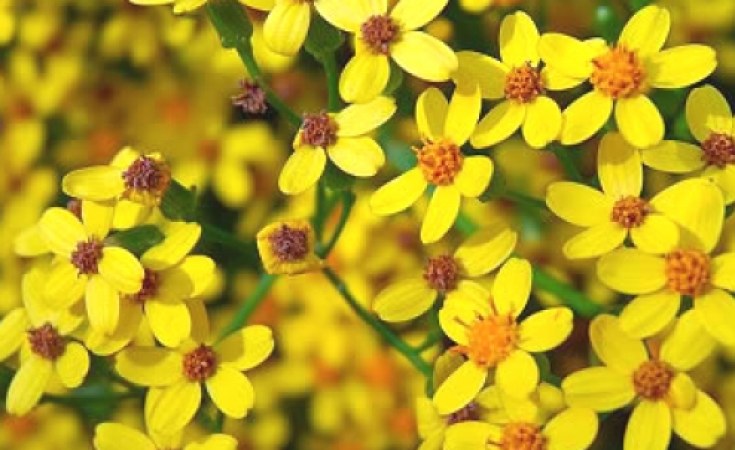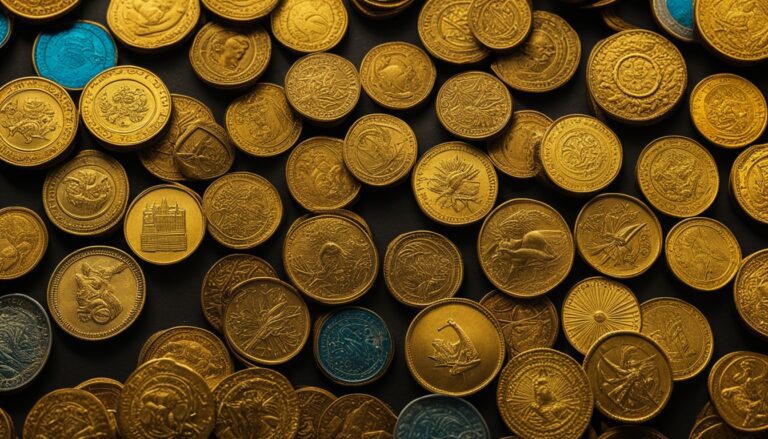How Do Ethiopians Celebrate The Ethiopian New Year (Enkutatash)?
How Ethiopians Celebrate the Ethiopian New Year (Enkutatash)
Ethiopians celebrate the Ethiopian New Year, known as Enkutatash, with great enthusiasm and colorful festivities. Enkutatash falls on September 11th (or the 12th during a leap year) in the Gregorian calendar, marking the end of the rainy season and the beginning of the sunnier days. This ancient celebration has roots dating back over 3000 years and holds significant cultural and historical importance in Ethiopia.
Enkutatash Festivities
The celebration of Enkutatash is a time for family gatherings, community events, and spiritual observances. One of the traditional customs during this time is the exchanging of bouquets of flowers and fresh green grass, symbolizing the coming of spring and new beginnings. Known as “Damera,” this practice involves singing, dancing, and making joyful noises to herald the New Year.
Religious Observances
Ethiopia is a predominantly Christian country, and Enkutatash holds religious significance, especially for the Orthodox Tewahedo Church. Many Ethiopians attend church services on the eve of the New Year, where prayers are offered, hymns are sung, and blessings are bestowed upon the congregation. Following the religious ceremonies, people return home to feast and celebrate with their loved ones.
Cultural Traditions
Traditional Ethiopian attire, such as the white Ethiopian dress called “habesha kemis” for women and a white cotton wrap for men known as “shamma,” is commonly worn during Enkutatash celebrations. Families come together to prepare special dishes like “doro wat” (spicy chicken stew) and “injera” (a fermented flatbread), which are shared with relatives and neighbors during communal meals.
Music and Dance
Enkutatash festivities are often accompanied by vibrant music and dance performances that showcase Ethiopia’s rich cultural heritage. Traditional instruments like the “kebero” (drum) and the “masenqo” (a single-stringed violin-like instrument) are played during these celebrations, adding to the rhythmic beats of the dances. The “eskista” dance, characterized by intricate shoulder movements, is a popular feature of Enkutatash festivities.
Enkutatash is a time of joy, renewal, and community spirit for Ethiopians around the world. By coming together to honor their traditions, customs, and history, Ethiopians celebrate the Ethiopian New Year with a deep sense of pride and unity that transcends generations.
Traditional Customs and Rituals Observed During Enkutatash Festivities
Enkutatash, the Ethiopian New Year, is a joyous occasion celebrated with a blend of ancient traditions and religious customs. The festivities mark the end of the rainy season and the beginning of the sunny weather, symbolizing a period of renewal and fresh beginnings. Ethiopians across the country commemorate this event with various rituals that have been handed down through generations.
One of the most prominent customs during Enkutatash is the tradition of exchanging bouquets of fresh yellow flowers, typically daisies, among family members, friends, and neighbors. These vibrant blooms are gathered to symbolize the beauty of the new season and exchanged as a gesture of goodwill and good fortune for the coming year. This practice echoes the ancient roots of the holiday and serves as a reminder of the country’s rich cultural heritage.
Another significant ritual observed during Enkutatash is the special religious services held in churches across Ethiopia. Priests clad in traditional attire lead prayers and blessings to usher in the New Year, invoking prosperity, peace, and abundance for the faithful. The spiritual aspect of the holiday is central to its observance, highlighting the deep connection between Ethiopian culture and its Christian roots.
In addition to these customs, Ethiopians also partake in traditional feasting and merrymaking during Enkutatash. Families gather to enjoy sumptuous meals featuring a variety of dishes, with injera (a sourdough flatbread) serving as the staple food. Special dishes such as doro wat (spicy chicken stew) and kitfo (minced raw meat) are prepared to mark the occasion, adding a culinary delight to the celebrations.
Moreover, cultural performances including music, dance, and traditional attire play a vital role in Enkutatash festivities. Colorful processions, drum beats, and lively dances fill the streets as people join together in jubilation. The sound of the kebero (traditional drum) reverberates through the air, creating a festive atmosphere that is both vibrant and enchanting.
Enkutatash is a time-honored celebration deeply rooted in Ethiopian culture, blending ancient traditions with modern-day revelry. The customs and rituals observed during this holiday reflect the country’s rich heritage and the enduring spirit of its people. As Ethiopians come together to welcome the New Year, they embrace a sense of unity, gratitude, and hope for the future, making Enkutatash a truly special and cherished occasion.
The Significance of Enkutatash in Ethiopian Culture and History
The celebration of Enkutatash holds deep cultural and historical significance for the Ethiopian people. This ancient holiday, marking the Ethiopian New Year, is observed on September 11th (or September 12th in leap years) according to the Gregorian calendar. Enkutatash is a joyous occasion that commemorates both the end of the rainy season and the return of the sunny days, symbolizing renewal and fresh beginnings.
Enkutatash has its roots in the traditions of the Ethiopian Orthodox Tewahedo Church and is also influenced by pre-Christian beliefs. According to Ethiopian legend, the holiday is tied to the story of the Queen of Sheba’s return from visiting King Solomon in Jerusalem. Upon her return to Ethiopia, her chiefs welcomed her with gifts of ensete (false banana) flowers, which are said to bloom at the end of the rainy season.
The Ethiopian New Year is a time for families and communities to come together, reconcile any differences, and look forward to the year ahead with hope and optimism. People dress in traditional clothing, attend church services, and participate in colorful processions and lively festivities.
One of the key customs associated with Enkutatash is the singing of traditional songs and the exchange of bouquets of flowers. Known as “Abebayehosh,” this practice symbolizes friendship, new beginnings, and the sharing of good wishes for the coming year. Additionally, young children often receive small gifts or money from elders as a token of blessing and good fortune.
Enkutatash is also a time to enjoy traditional Ethiopian cuisine, including injera (a sourdough flatbread), doro wat (spicy chicken stew), and tibs (sautéed meat). These mouthwatering dishes are shared among family and friends during feasts and gatherings, adding to the festive atmosphere of the holiday.
In addition to the religious and cultural aspects of Enkutatash, the holiday holds historical significance as a symbol of resilience and national pride for the Ethiopian people. Despite challenges and changes over the centuries, the celebration of the Ethiopian New Year has endured as a testament to the rich heritage and identity of the country.
Enkutatash serves as a time of reflection, gratitude, and celebration for Ethiopians around the world, highlighting the enduring traditions, values, and spirit of the Ethiopian people.
Enjoy Festive Foods and Dishes During the Ethiopian New Year
Ethiopians celebrate the Ethiopian New Year, known as Enkutatash, with a variety of traditional foods and dishes that hold cultural significance and add to the joyous festivities. One of the most popular dishes during this celebration is Doro Wat, a spicy chicken stew that is often served with injera, a sourdough flatbread typical in Ethiopian cuisine. Doro Wat symbolizes unity and togetherness, making it a staple dish for gatherings during Enkutatash.
Another favorite dish enjoyed during the Ethiopian New Year is Kitfo, a minced raw beef dish seasoned with spices and served with cottage cheese and greens. This dish is a delicacy that represents prosperity and abundance in the coming year. Ethiopians also indulge in a variety of vegetarian dishes during Enkutatash, such as Gomen (collard greens) and Misir Wat (spicy red lentils), reflecting the country’s rich culinary heritage and the importance of plant-based foods in Ethiopian culture.
In addition to these savory dishes, Ethiopians also have a sweet tooth during the New Year celebrations. Traditional desserts like Dulet (a spicy, savory dish made from minced tripe, liver, and other meats) and T’ej (a honey wine) are enjoyed to add sweetness and joy to the festivities. These desserts are often shared among family and friends as a way to express gratitude and goodwill towards one another.
During Enkutatash, it is common for families to gather and share a communal meal, known as a “messob,” where various traditional dishes are served on a large platter made from woven straw. This communal dining experience fosters a sense of unity and community spirit among participants, reinforcing the values of sharing and togetherness that are central to Ethiopian culture.
The Ethiopian New Year celebration of Enkutatash is not only a time to mark the end of the rainy season and the beginning of a new year but also a time to enjoy delicious foods that are deeply rooted in the country’s history and traditions. Festive dishes like Doro Wat, Kitfo, and traditional desserts play a significant role in bringing families and communities together to celebrate the richness of Ethiopian cuisine and culture during this special time of year.
Cultural Dances and Music Performances at Enkutatash Celebrations
The Ethiopian New Year, known as Enkutatash, is a vibrant and festive time of year filled with traditional dances and music performances that reflect the rich cultural heritage of Ethiopia. Ethiopians celebrate Enkutatash with colorful gatherings where dance and music play a significant role in the festivities.
One of the most popular traditional dances performed during Enkutatash is the Eskista dance. This dance involves intricate movements of the shoulders, neck, and hips, creating a mesmerizing display of skill and agility. The dancers wear traditional Ethiopian clothing, adding to the visual appeal of the performance. The Eskista dance is often accompanied by lively music featuring drums, flutes, and other traditional instruments.
Another dance commonly seen at Enkutatash celebrations is the Amharic dance. This dance involves rhythmic movements of the feet and hips, creating a joyful and energetic atmosphere. The dancers move in unison to the beat of the music, showcasing the unity and harmony of the Ethiopian people.
Music also plays a vital role in Enkutatash celebrations, with traditional songs and melodies filling the air during the festivities. Ethiopian music is known for its unique sounds and rhythms, often featuring instruments such as the krar (a five- or six-stringed lyre) and the kebero (a traditional drum). Musicians and singers entertain the crowds with soulful performances that evoke a sense of pride and cultural identity.
In addition to traditional dances and music, modern interpretations of Ethiopian culture are also showcased at Enkutatash celebrations. Dance troupes and musical groups blend traditional elements with contemporary styles, creating a fusion of the old and the new. This fusion reflects the dynamic and ever-evolving nature of Ethiopian culture, honoring the past while embracing the future.
Cultural dances and music performances are integral parts of Enkutatash celebrations, bringing people together to rejoice in the rich heritage of Ethiopia. The vibrant colors, rhythmic movements, and soul-stirring sounds create an unforgettable experience for all who participate in this joyous occasion. Whether watching a traditional dance or listening to a lively melody, Enkutatash celebrations offer a glimpse into the cultural soul of Ethiopia, celebrating unity, diversity, and resilience.
Conclusion
Ethiopians celebrate the Ethiopian New Year, known as Enkutatash, with great enthusiasm and traditional customs that have been passed down for generations. This celebration holds significant cultural and historical importance in Ethiopian society, marking the end of the rainy season and the beginning of a new year. The colorful festivities include various rituals and practices that symbolize renewal, hope, and blessings for the year ahead.
During the Enkutatash celebrations, Ethiopians engage in a variety of traditional customs and rituals. One common practice is the exchanging of bouquets of flowers, especially daisies, among family members, friends, and neighbors as a symbol of joy and fresh beginnings. Another popular tradition is attending church services to offer prayers and thanksgiving for the past year’s blessings while seeking divine guidance and protection for the future.
Enkutatash holds significant cultural and historical importance in Ethiopia. It is believed to have originated from the biblical story of the Queen of Sheba’s return to Ethiopia after visiting King Solomon in Jerusalem. The name “Enkutatash” itself means “gift of jewels” in Amharic, reflecting the tradition of exchanging gifts during this festive time. The holiday also coincides with the end of the fasting period observed by the Ethiopian Orthodox Church, adding a spiritual dimension to the celebrations.
One of the highlights of the Ethiopian New Year is the delicious festive foods and dishes enjoyed during this time. Traditional dishes such as doro wat (spicy chicken stew), injera (sourdough flatbread), and tibs (sautéed meat) are commonly prepared and shared with loved ones. Families gather around communal tables to enjoy these flavorful meals together, creating a sense of unity and togetherness.
Cultural dances and music performances play a central role in Enkutatash celebrations, adding to the festive atmosphere and joyous spirit of the holiday. Ethiopians showcase their rich cultural heritage through vibrant dance routines, accompanied by rhythmic drumming and traditional musical instruments. These performances bring people together, fostering a sense of community and pride in Ethiopian identity.
The Ethiopian New Year, Enkutatash, is a time of joy, renewal, and celebration for Ethiopians around the world. Through traditional customs, festive foods, cultural dances, and music performances, the spirit of Enkutatash embodies the resilience, faith, and sense of unity that define Ethiopian culture and history. As families and communities come together to mark the beginning of a new year, they cherish their shared traditions and look forward to the blessings that the future holds.





